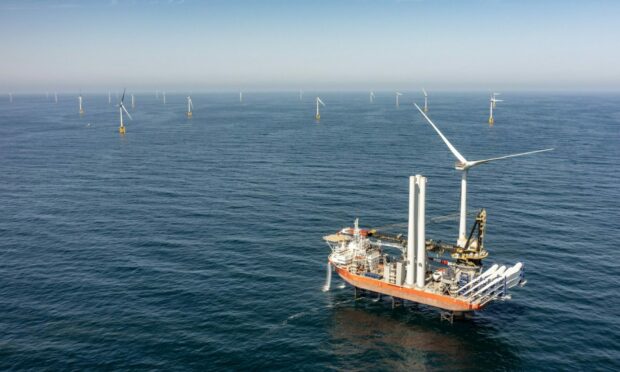Scotland was not windy enough to meet the needs of renewables giant SSE in the three months to June.
Perth-based SSE said dry and still weather patterns “well below the long-term average” for the UK slashed first quarter renewable energy output by the equivalent of 5% a year.
While people throughout Britain basked in the sunshine of the hottest June on record, wind turbines which SSE has an interest in were struggling to deliver on expectations.
Many of the machines are in the north and north-east, or off the region’s coastlines.
SSE said the first few weeks of the second quarter of its trading year had seen a return to “more normal weather”
First quarter output of electricity from renewable sources in which SSE has an ownership stake totalled 624 gigawatt (GW)-hours, about 29% “behind plan” for the period.
Onshore wind generation came in at 71% of planned output. Offshore turbines hit 84%.
Water-dependent hydroelectricity took an even bigger hit from an unusually long dry spell, generating only 59% of expected output.
Output of electricity from SSE’s gas-fired generation operations, including Peterhead power station, was down by 2.5% on the same period last year, reflecting “more planned outages”.
In its first quarter trading update today SSE said key milestones were reached on major projects, supporting delivery of its £18 billion Net Zero Acceleration Programme (NZAP) Plus investment plans.
We are seizing the long-term opportunities presented by net-zero.”
Finance director Gregor Alexander said: “SSE is a long-term business with a clear strategy, and we remain focused on delivering the ambitious NZAP Plus growth plan that we announced in May.
“We are making good progress on the critical national infrastructure projects that underpin our growth plans out to 2027, and we continue to develop options that could see us invest up to £40bn over the next decade.”
He added: “We are seizing the long-term opportunities presented by net-zero, while in the near term, subject to normal weather and plant availability, our outlook for the full-year remains unchanged.”
The company’s first quarter milestones include:
- The 114th and final Vestas turbine installed for the Seagreen offshore wind farm off the Angus coast
- Construction at the Viking onshore wind farm in Shetland is “on track”, with more than half of the Vestas turbines now installed
- First power from Dogger Bank A offshore wind farm off the east coast of England is expected in the coming weeks
- A joint venture was signed with National Grid to deliver the Eastern Green Link 2 project, a 2GW high-voltage direct current (HVDC) subsea transmission cable from Peterhead to Wilsthorpe, near Bridlington in Yorkshire
- SSE’s Shetland HVDC project is “currently on schedule” ahead of “energisation” next summer. Energy regulator Ofgem has approved the subsea transmission link to Orkney
SSE is sticking with its previous forecast of full-year earnings of more than £1.50 per share.
Aberdeen Bay wind farm operator Vattenfall puts giant project on ice
Meanwhile, one of the world’s largest wind energy developers has halted its top UK offshore project and warned of further cancellations.
Vattenfall, whose operations include Aberdeen Bay wind farm, has put its giant 1.4GW Boreas project off the coast of Norfolk on ice. It said rising costs had made the Contract for Difference awarded last year for a strike price of £45 per megawatt-hour “uneconomic”,


